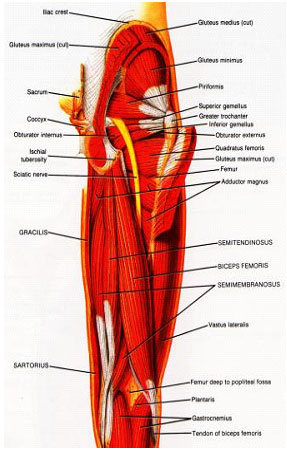- Spinal Injuries
- Hip Injuries
- Forefoot Injuries
- Knee Injuries
- Heel Injuries
- Midfoot / Arch Injuries
- Lower Leg Injuries - Calf & Soleus
- Upper Leg Injuries - Hamstring
- Medications
- Shoulder Injuries
- Ribcage / Chest Injuries
- Abdominal Injuries
- Head Injuries
- Elbow Injuries
- Hand Injuries
- Lower Leg Injuries - Achilles
- Ankle Injuries
- Upper Leg Injuries - Quadriceps
- Groin Injuries
- Lower Leg Injuries - Shin
- Spinal Injuries
- Hip Injuries
- Forefoot Injuries
- Knee Injuries
- Heel Injuries
- Midfoot / Arch Injuries
- Lower Leg Injuries - Calf & Soleus
- Upper Leg Injuries - Hamstring
- Medications
- Shoulder Injuries
- Ribcage / Chest Injuries
- Abdominal Injuries
- Head Injuries
- Elbow Injuries
- Hand Injuries
- Lower Leg Injuries - Achilles
- Ankle Injuries
- Upper Leg Injuries - Quadriceps
- Groin Injuries
- Lower Leg Injuries - Shin
 login
login

 View profile
View profile Add to friends
Add to friends Go to training log
Go to training log Go to race log
Go to race log Send a message
Send a message View album
View album
 CONNECT WITH FACEBOOK
CONNECT WITH FACEBOOK
Hamstring Injuries and Rehabilitation
Symptoms will vary depending on severity of the injury. Injuries generally occur suddenly and often produce immediate pain at the muscle insertion points behind the knee or in the buttocks.
Ronald Hanson, MD and Christian Millward, MD
Members, AMSSM Utah
Background
The hamstrings are a group of three powerful muscles that span the back of the upper leg: semimembranosus, semi-tendinosus, and biceps femoris (see figure). The muscles connect to bones at the lower pelvis and below the knee. They function to bend the knee and straighten the hip (move the thigh backward when walking). Hamstrings are used primarily in power activities such as running, jumping and climbing.
A pulled hamstring, or hamstring strain, occurs when excessive forces tear muscle fibers. Injuries are graded from minor strains (Grade 1) to a complete tear (Grade 3). Injuries usually occur with sudden lunging, running or jumping. One is most susceptible to injury when the muscle is contracted in a fully stretched position. Other conditions that increase risk of injury include fatigue, improper warm up, lack of stretching/flexibility and relative hamstring weakness compared to quadriceps.
Symptoms
Symptoms will vary depending on severity of the injury. Injuries generally occur suddenly and often produce immediate pain at the muscle insertion points behind the knee or in the buttocks. Weak knee flexion, decreased/painful range of motion and limping due to pain are common. Other symptoms include bruising, swelling and muscle spasms. Symptoms are generally more severe with increasing grade of the strain. Those with a complete (Grade 3) tear may feel a “ball” of muscle on the back of the leg.
 Recent Advancements
Recent Advancements
Treatment and Rehabilitation
Once an injury has occurred, the athlete should stop activity and rest immediately. Rest, ice, compression (with an Ace wrap) and elevation along with medicines such as ibuprofen or naproxen will help early on. Heat should not be applied for the first 3-4 days as it may increase swelling and bleeding within the muscle. Gentle stretching and light resistive exercise during the first few days will help to properly align healing muscle tissue. Walking, biking and various stretches may be implemented in the first few days if they do not cause pain.
More advanced activities can be added as long as they can be performed pain free. Initially, avoid quick starts or stops and always include a good warm-up and cool-down period. Stretching is more effective when the stretch is held for approximately 30 seconds without “bouncing.” As a general rule, any activity that elicits pain at or near the injured site may be causing further injury and will delay your recovery. During the rehabilitative period, keep the hamstrings warm by wearing tights or a compressive wrap (Ace, etc).
Norwegian researcher Dr. Roald Bahr and his associates have developed unique methods of hamstring strengthening. Their regimen consists of strengthening the hamstrings while stretching the muscle—a form of eccentric training—combined with stability and core strengthening techniques. These methods have shown to prevent injuries; however, their utility in rehabilitation has yet to be studied.
Medical Attention
One should seek medical advice from a sports medicine physician if there is ever any doubt or questions regarding the injury. Proper treatment early is the best way to avoid long term problems with any injury. Any Grade 2 or Grade 3 strains as well as any injury that doesn’t show improvement within 2 weeks should be evaluated. There may be a more serious muscle strain or even a fracture where the hamstrings attach to the bone. This injury may need surgical correction. Recurrent pain months after an injury may indicate the formation of calcification within the injured area, called myositis ossificans. This condition can be debilitating and may require intervention to return an athlete to proper form.
If you have recurrent strains or other injuries, it may be due to your form or function during activity. For example, cyclists are more prone to hamstring strains if they have high seat position, improper cleat position, excessive pedal float or a position too far back in the saddle. Further, women tend to have more anterior cruciate ligament (ACL) injuries than men. This is thought to be partly due to differences in hamstring strength and firing patterns. Hamstring strengthening has been associated with a decreased incidence of ACL injuries, a potentially significant benefit to female athletes.
Ronald Hanson, MD and Christian Millward, MD
Members, AMSSM Utah
Click on star to vote